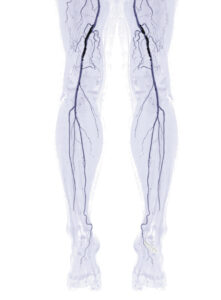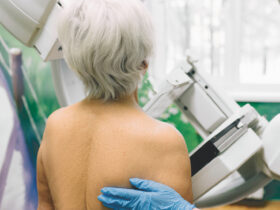By Joe Altepeter, DPM
 As your podiatrist, my top priority is to help you keep your feet healthy and pain-free. However, there’s one condition that can silently threaten your foot health and overall well-being — Peripheral Arterial Disease, or PAD. With September being PAD Awareness Month, it’s the perfect time to talk about why this condition is so crucial and how you can take steps to protect yourself.
As your podiatrist, my top priority is to help you keep your feet healthy and pain-free. However, there’s one condition that can silently threaten your foot health and overall well-being — Peripheral Arterial Disease, or PAD. With September being PAD Awareness Month, it’s the perfect time to talk about why this condition is so crucial and how you can take steps to protect yourself.
What Is Peripheral Arterial Disease?
PAD occurs when the arteries that carry blood to your legs and feet become narrowed or blocked due to a buildup of fatty deposits, known as plaque. This reduced blood flow can lead to various complications, particularly in your lower limbs. PAD is more than just poor circulation—it’s a serious health issue that can increase your risk of heart attack, stroke, and even amputation if left untreated.
Why You Should Be Concerned About PAD
You might be wondering why we’re talking about PAD in a podiatry office. The reason is simple: your feet are often the first place where the symptoms of PAD show up. Some of the early signs include:
• Pain or cramping in your legs or feet during walking or exercise that goes away with rest (a condition called claudication).
• Numbness or weakness in your legs.
• Coldness in your lower leg or foot, especially when compared to the other leg.
• Sores on your toes, feet, or legs that won’t heal.
• A change in the color of your legs, shiny skin, or slow-growing toenails.
These symptoms may seem minor, but they can be warning signs of a much bigger problem. PAD doesn’t just affect your mobility—it can lead to serious, life-threatening complications.
Who Is at Risk for PAD?
Certain factors can increase your risk of developing PAD. If you are over the age of 50, have a history of smoking, diabetes, high blood pressure, or high cholesterol, your risk is higher. People with a family history of heart disease or stroke are also at greater risk.
If any of these risk factors apply to you, it’s essential to be proactive about your vascular health. Don’t wait for symptoms to become severe before seeking help.
How Can You Protect Yourself?
Here’s what you can do to reduce your risk of PAD and protect your feet:
1. Get Regular Check-Ups: Make sure to include a vascular assessment in your routine health checks, especially if you’re over 50 or have risk factors for PAD. I can perform simple, non-invasive tests to assess the blood flow in your legs and feet.
2. Quit Smoking: If you smoke, quitting is the single most important thing you can do to protect your blood vessels and reduce your risk of PAD. I understand that quitting is tough, and I’m here to support you with resources and advice.
3. Manage Your Health Conditions: If you have diabetes, high blood pressure, or high cholesterol, it’s critical to manage these conditions carefully.
Keep your blood sugar levels, blood pressure, and cholesterol under control with the help of your healthcare team.
4. Stay Active: Regular physical activity helps improve circulation and can reduce the symptoms of PAD. Even a simple daily walk can make a big difference. Start slowly and gradually increase your activity level.
5. Take Care of Your Feet: If you already have PAD or are at risk, proper foot care is essential. Inspect your feet daily for cuts, sores, or changes in color, and keep them clean and moisturized. If you notice any problems, don’t hesitate to contact me right away.
Let’s Work Together During PAD Awareness Month
During PAD Awareness Month, I encourage you to take these steps seriously. If you have any concerns about your vascular health or notice any symptoms, please schedule an appointment with me. Together, we can assess your risk, discuss any symptoms you might be experiencing, and create a plan to keep your feet healthy.
Remember, early detection and treatment of PAD can make a huge difference in preventing complications. Let’s use this month as a reminder to be proactive about your vascular health—because your feet deserve the best care possible.
Disclaimer: This content is not intended to be a substitute for professional medical advice, diagnosis, or treatment. Always seek the advice of your physician or other qualified health care provider with any questions you may have regarding a medical condition.
Joe Altepeter, DPM, AACFAS, is a Podiatrist at Family Foot & Leg Centers in Fort Myers FL. He is a Fellow of the American College of Foot & Ankle Surgeons. Call 239-430-3668 or visit www.NaplesPodiatrist.com to make an appointment. Visit FootHealthFacts.org to learn more about foot and ankle conditions.
1645 Colonial Blvd.
Fort Myers, FL 33907
(239) 430 – 3668 (FOOT)
www.NaplesPodiatrist.com









